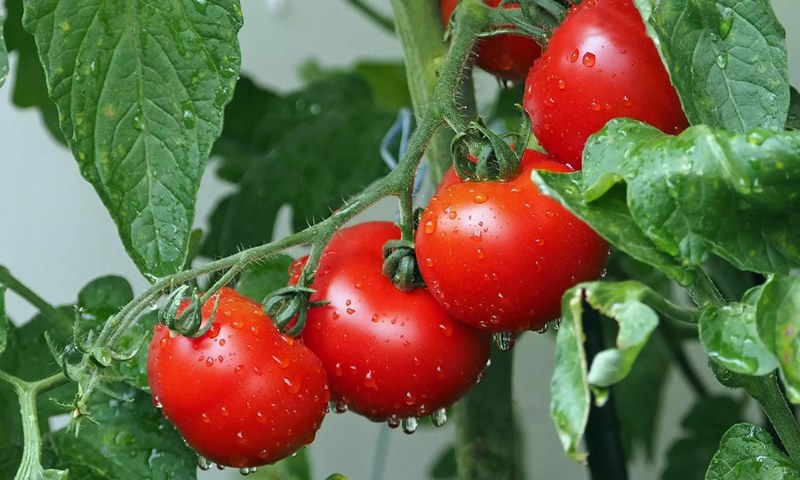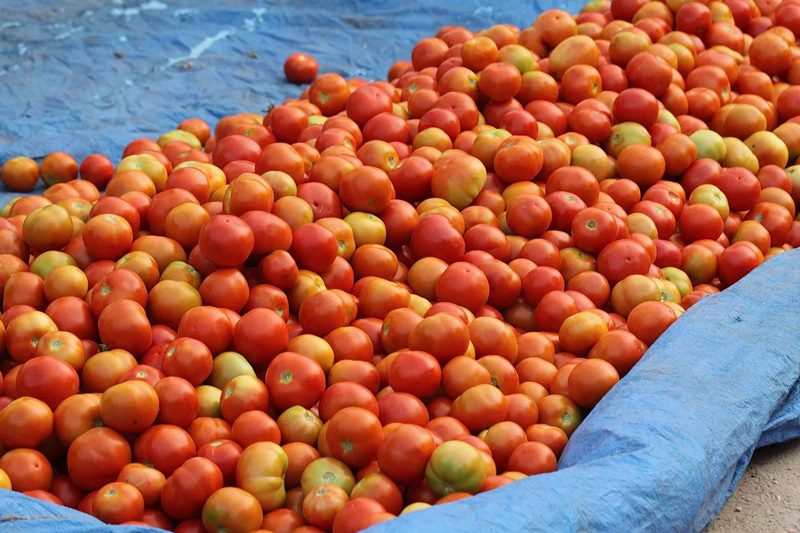Picking the right tomato for your kitchen or the farm
The Indian Institute of Vegetable Research, Varanasi has developed several varieties of tomatoes so that each geographical or climatic zone in the country can pick the one that grows best in its area. Read on to pick the right variety and have a bountiful harvest.


Tomatoes can be grown thrice a year; In May/June, September/October and January/ February. Photo: Pixabay
‘Garnish with tomatoes’ — How often do we read that in a recipe. And now, a large number of urban residents grow their own tomatoes in pots in their mini kitchen gardens.
Tomatoes are in demand round the year and they can be cultivated all year around too. However, September is perhaps the best time to grow them. But in order to have a healthy and bountiful tomato crop, the challenge is in selecting the right variety of tomato to cultivate.
The Indian Institute of Vegetable Research (IIVR) in Varanasi, Uttar Pradesh has developed several varieties of tomatoes best suited for different regions of the country.
Also Read: Mirzapur’s tomatoes travel to Oman and the UK
“The most important thing to keep in mind is timing and the variety,” Narendra Rai, principal scientist of the institute, told Gaon Connection. “The variety of the tomato should be chosen depending on the geographical and climatic zones where the tomato is going to be grown. So choosing the right tomato is crucial,” cautioned Rai.

Tomatoes can be grown thrice a year; In May/June, September/October and January/ February. The crop that is sown in September/October will be ready to harvest in December/January, he said. Several varieties of tomatoes have been developed and the following are some bred by the Indian Institute of Vegetable Research.
Also Read: Tomatoes for a rupee or two a kilo, farmers in Haryana dump their produce in the fields to rot
Kashi Vishesh: This variety of tomatoes is resistant to the tobacco leaf curl virus. It has deep green leaves and stems and the fruit is round, red and of medium size, weighing about 80 grams each. These tomatoes are ready to harvest in about 75 days, and its yield is upto 450 quintals per hectare.
Kashi Vishesh tomatoes are grown mostly in the Union Territory of Jammu and Kashmir, Himachal Pradesh, Punjab, Uttaranchal, Uttar Pradesh, Bihar and Jharkhand.
Kashi Amrit: The round and red tomatoes weigh about 108 grams each and these are also resistant to the tobacco leaf curl virus. The yield is about 620 quintal per hectare. This variety has been specially developed for Uttar Pradesh, Bihar and Jharkhand.
Also Read: National Nutrition Month: September is a good month to start your kitchen gardens

Kashi Hemant: The round and attractive red tomatoes of this variety weigh up to 85 grams each. Its yield is about 400-420 quintals per hectare. These grow well in Chhattisgarh, Odisha, Andhra Pradesh and Madhya Pradesh.
Kashi Sharad: This variety has wide leaves with egg-shaped red tomatoes. One of its significant qualities is that this variety of tomatoes can be stored for a long time without spoiling. Each tomato weighs up to 95 grams and its yield is up to 500 quintals per hectare. This variety has been developed for the Union Territory of Jammu and Kashmir, Himachal Pradesh and Uttarakhand.
Kashi Anupama: Red, big and roundish, these tomatoes are ready to harvest in 80 days. Their yield is about 500-600 quintals per hectare. This variety was developed to be cultivated in Rajasthan,Gujarat and Haryana.
Kashi Abhimani: With deep red tomatoes that weigh about 75-95 grams each, this variety is long lasting and does not spoil quickly either. It is suited to be transported even long distances. It is resistant to the tobacco leaf curl virus. This variety was developed for the Union Territory of Jammu and Kashmir, Himachal Pradesh, Uttaranchal, Punjab, Uttar Pradesh and Bihar.
So depending on which part of the country you live in, pick the variety best suited to your region and enjoy the flavours.
Read the story in Hindi

